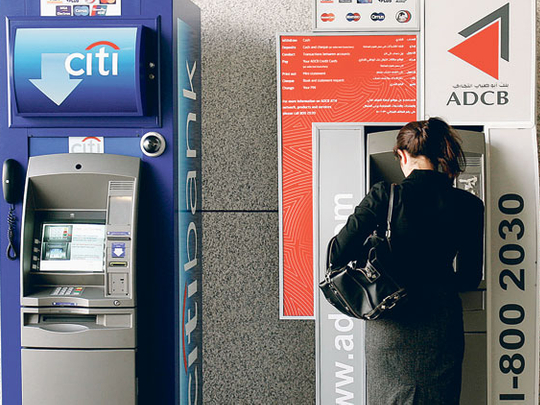
Dubai: The UAE banking sector could face further deterioration in asset quality as some of the corporate restructuring and more loan impairments from the retail banking businesses will be reflected in the first half results, analysts, rating agencies and bankers said as banks are preparing to announce their second-quarter results from next week.
"The first half of 2010 has been difficult for the UAE's banks, with rising retail and corporate impairments, debt restructuring, reduced lending appetite and stubbornly high loan/deposit ratios resulting in some stagnation in the sector," said Robert Thursfield, a Dubai-based Director in Fitch's Financial Institutions team.
Although the impairments from some of the recent corporate restructurings are likely to impact the profitability of banks for the whole year analysts said they do not expect a dramatic rise in provisions in the first three quarters.
"The first three quarters can be somewhat quiet in terms of loan loss provisions, while the fourth quarter will normally take the largest hit," said M.R. Raghu, Senior Vice President-Research, Kuwait Financial Centre (Markaz).
Under pressure
Credit rating agency Moody's said in a recent report that asset quality among UAE banks will remain under pressure this year.
Dubai World's recent restructuring is central to defining problem loans that pose significant asset quality challenges to the UAE banking system. Although systemic support provided by the UAE's federal government has eased the banks' financial challenges, according to Moody's asset quality pressures will continue to weigh on UAE banks.
"UAE banks faced significant asset quality problems in 2009, but their capital levels and good core profitability have allowed them to absorb losses without significantly undermining their creditworthiness," said John Tofarides, analyst at Moody's Middle East in Dubai.
The Institute of International Finance said recently that the profitability of banks will be under pressure this year as banks have been increasing their collective provisions.
In absolute terms, total provisions for the first quarter of 2010 added up to $1.5 billion, which is 239 per cent higher than in the first quarter of 2009.
The combined provisions of banks increased from $6.8 billion at end-2008 to $12.8 billion at end-March 2010. On average, the NPL ratio of banks rose from 2.5 per cent at end-2008 to 4.3 per cent at end-2009, and is expected to rise to about 9 per cent in 2010. This increase is partly due to the central bank's tightening of regulatory standards via a reduction of the loan classification period from 180 days to 90 days.
According to Fitch, most UAE banks use the 90-day rule. However, some banks still recognise NPLs when they become 180 days overdue. The process is also judgemental, which means the full impact of NPLs on their financial profile is still lagging. It remains unconfirmed whether the Central Bank will be drafting a regulation proposing to shorten the NPL classification to 90 days and to require a general portfolio provision of 1.25 per cent by end 2010. If implemented, this would have a negative impact on asset quality ratios.
Despite the rising NPLs and pressure on profitability, analysts and rating agencies say banks are well capitalised to absorb the stress. According to Moody's UAE banks have high capitalisation levels by international and regional standards.
The average capital adequacy ratio for UAE banks stood at 20.3 per cent at end-March 2010, up from 13 per cent at end-2008, and one of the highest for the region, thanks to government capital injections of $16 billion, benefiting several banks.
Higher requirements
"The profitability of the banking sectors have been affected by the higher provisioning requirements related to the exposure to some and overall deterioration in corporate loan portfolios, personal loan and credit card portfolios. However, the fundamental strength of the balance sheets indicate the banks do not face any systemic risk," said Garbis Iradian, Senior Economist, Africa Middle East Department of IIF.
Fitch Ratings said in a report last week that the UAE banking sector's strong capitalisation should make its current challenges manageable despite rising impairments and difficult operating conditions.
The agency said it believes that fresh government support for the sector is less likely to be required..
- $1.5b total provisions for the first quarter
- 9% projected NPL ratio this year
- 20.3% average capital adequacy ratio in end-March 2010









